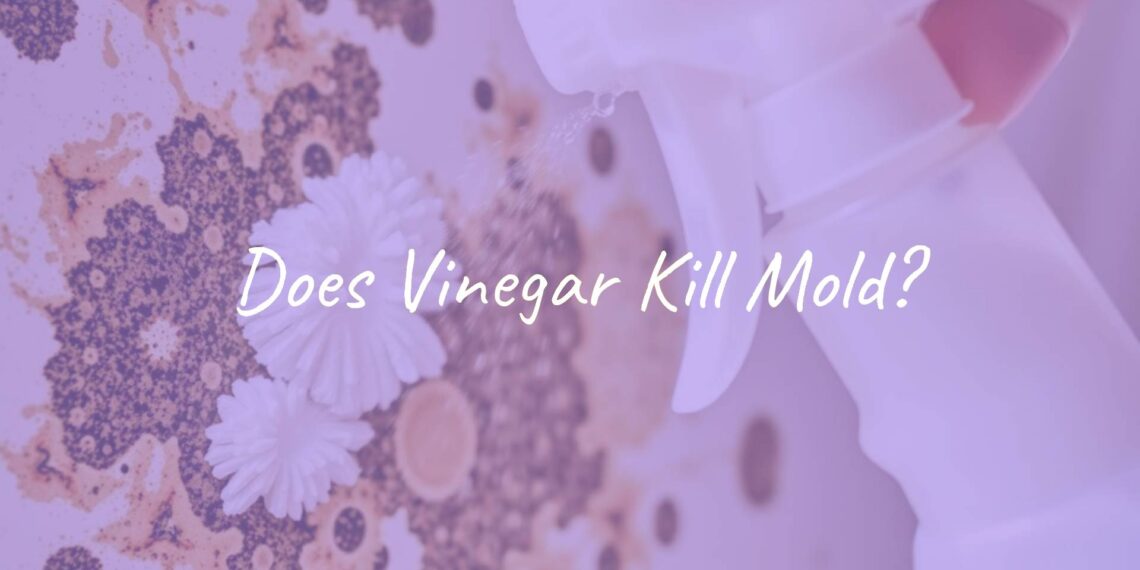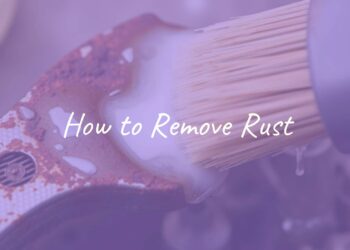Yes, vinegar can kill mold. White vinegar is a common home product known for its antifungal and antibacterial qualities. It works well for cleaning up many types of mold in the house. While vinegar might not get rid of every kind of mold or resolve the worst infestations, it can kill a large portion of molds, including black mold, making it a useful cleaner for smaller mold problems.

Mold, sometimes called mildew, is a fungus that likes damp, warm, and dark places. While it helps break down plants outdoors, indoor mold can cause health problems like allergies, trouble breathing, and asthma. Removing mold quickly helps keep your indoor air healthy.
The good news is, vinegar offers a natural and non-toxic alternative to strong chemicals for small mold spots. Its acid can soak into porous surfaces better than some other household cleaners and helps deal with the source of the mold, not just what’s on the surface. But it is important to use vinegar properly, and know where it works best and where it might not be enough for the job.
Does Vinegar Kill Mold?
People often wonder if vinegar really kills mold or just washes it away. The answer is that vinegar is actually good at killing mold because its natural acid, called acetic acid, damages the mold and stops it from growing. Vinegar can reach underneath the surface and attack the mold’s roots, not just the parts you can see.
But, just to be clear, vinegar may not work for every mold problem or every single mold type. For large or stubborn areas, you might need professional help. But for many small and common mold spots around the house, vinegar works well.
Does Vinegar Kill Mold or Just Clean the Surface?
Some cleaners only remove the colored part of the mold, which can make it look clean while the roots are still alive and can grow back. Vinegar is different because its acidity lets it soak into the material and destroy the mold’s roots, called mycelia and hyphae. By really getting into the surface, vinegar helps prevent the mold from coming right back.
If you only clean the outside, mold can easily return. Vinegar makes new growth less likely by disrupting the mold’s structure on a deeper level.

Which Types of Mold Can Vinegar Kill?
White vinegar is proven to be able to kill more than 80% of mold species, which includes some of the harmful types like black mold. For example, studies show vinegar works well against common molds such as Penicillium chrysogenum, but it’s less effective on others like Aspergillus fumigatus. Most everyday household molds are affected by vinegar, but there are a few that may survive. Still, using vinegar will get rid of a lot of the common mold problems you see at home.
How Does Vinegar Compare to Other Mold Cleaners?
| Cleaner | Mold Removal Power | Surface Reach | Safe for Most Homes? |
|---|---|---|---|
| Vinegar | Kills >80% of mold types | Can soak into porous materials | Yes |
| Bleach | Mainly removes appearance, not roots | Only surface-roots may stay behind | No, strong fumes and can cause damage |
| Tea Tree Oil | Very effective, even more than vinegar for some molds | Can soak in, but expensive | Yes, but can irritate skin |
| Hydrogen Peroxide | Works well | Penetrates somewhat, good for some surfaces | Yes, but must be handled with care |
Vinegar often wins because it’s easy to find, cheap, non-toxic, and works on many surfaces better than bleach. Still, some other solutions like tea tree oil or hydrogen peroxide might be even more effective but are often less available or more costly.

Common Myths about Vinegar and Mold
- Myth: Bleach is best for any mold.
Fact: Bleach mostly gets rid of color on the surface but doesn’t kill the roots, so mold can come back fast. - Myth: Vinegar always kills 82% exactly.
Fact: Vinegar kills many types, but the “82%” figure isn’t proven in all cases. It is still widely effective. - Myth: You need to water down vinegar before using it on mold.
Fact: Undiluted vinegar is best for mold removal. - Myth: No visible mold means no problem.
Fact: Mold can hide and still be harmful, so check hidden or damp areas regularly.
How Does Vinegar Work Against Mold?
Vinegar’s power comes from its acidity. It makes the environment unsuitable for mold to live and grow. The acid in vinegar damages the mold’s cells, so it cannot survive and spread. By lowering the pH where mold lives, vinegar stops mold in its tracks.
Which Acid in Vinegar Fights Mold?
The main acid in vinegar is acetic acid. Regular white vinegar usually has 5% acetic acid, while cleaning vinegar can have up to 6%. The pH of around 2.5 is too acidic for most mold, so it kills them. Acetic acid affects the mold’s proteins and DNA, stopping it from multiplying or growing back easily.
Is White Vinegar or Apple Cider Vinegar Better?
White vinegar is better for killing mold because it is stronger (has more acetic acid) and doesn’t have extra sugars or ingredients that apple cider vinegar does. Cleaning vinegar is even stronger than regular white vinegar. Apple cider vinegar may leave a sticky film or a different odor and is usually not as effective.
How Long Should Vinegar Sit on Mold?
After spraying vinegar on mold, let it stay there for at least one hour. If the mold is deep or stubborn, leave the vinegar on longer (overnight if you want). This allows enough time for the acid to break down the mold fully before you scrub and rinse the area.
What Are Vinegar’s Limits for Mold?
- It won’t kill every mold species, as some types resist acid.
- Works best for small mold spots (under 10 square feet). For bigger jobs, get help from a professional.
- Not always able to reach deep-rooted mold in very porous materials (like carpets or ceiling tiles).
- Can damage some surfaces due to its acidity, like natural stone, some metals, or wood finishes.

How to Use Vinegar to Remove Mold at Home
Using vinegar to get rid of mold is simple, but you need to follow some steps to make sure it’s done safely and well. Always use the right equipment and protect yourself when working around mold.
What Tools and Safety Gear Do You Need?
- White vinegar (5% or higher, undiluted)
- Spray bottle
- Baking soda (optional, helps with stubborn spots)
- Scrub brush or pad
- N-95 mask
- Rubber gloves
- Goggles or safety glasses
- Rags or sponges
- Bucket for rinsing
Wear old clothes and open windows for airflow and to reduce vinegar fumes and airborne mold spores.
Should You Dilute Vinegar?
Use vinegar straight from the bottle for the best effect on mold. If cleaning delicate surfaces, you can dilute it, but it won’t work as well. The smell will go away as the vinegar dries.
Easy Steps to Clean Mold with Vinegar
- Ventilate: Open windows/doors. Put on safety gear (mask, gloves, goggles).
- Apply: Spray undiluted vinegar straight onto the mold. Cover the area well.
- Wait: Let vinegar sit for at least one hour (longer for tough spots).
- Scrub: Spray a mix of 1 teaspoon baking soda in 2 cups water (optional). Scrub stains and stuck-on mold.
- Rinse: Wipe area with a clean, damp rag.
- Final Spray and Dry: Lightly spray with vinegar or baking soda solution again. Let it air-dry. Do not wipe off this final layer.
Throw away any cleaning materials used on mold to avoid spreading it to other areas.

Can You Mix Vinegar with Other Cleaners?
Do not mix vinegar with strong chemical cleaners. Mixing it with bleach or hydrogen peroxide can produce dangerous gases. Always use one cleaner at a time. Vinegar and baking soda may be used one after another but should not be mixed in the same bottle.
What Happens if You Mix Vinegar and Bleach?
Never mix vinegar and bleach. The combination creates chlorine gas, which is very toxic and can damage your lungs, eyes, and skin, or be deadly in high amounts. Likewise, don’t mix vinegar with hydrogen peroxide-this can create another toxic substance called peracetic acid. Always thoroughly wash an area between using different cleaners.
How Vinegar Works on Different Surfaces
Vinegar kills mold best on some materials and not as well on others. How porous the surface is, and what it’s made of, will affect your results. Vinegar’s strong acid can also damage some materials.
| Surface | Vinegar Safe? | Effectiveness | Notes |
|---|---|---|---|
| Non-porous (glass, sealed tile) | Yes | Very effective | Wipes away easily |
| Porous (drywall, wood, fabric) | With caution | Some effectiveness | May not reach deep roots |
| Natural stone (marble, granite) | No | Can cause damage | Use stone cleaner instead |
| Metal (aluminum, stainless steel) | No | Can corrode or stain | Use soap/water or metal cleaner |
| Leather | With caution | Needs dilution | Test first in a hidden spot |
Special Surfaces
- Drywall: Vinegar can help but might not reach deep spores; replace the section if needed.
- Wood: Might dull or damage finish; use diluted vinegar after testing a small spot.
- Tile/grout: Works well, but avoid on natural stone surfaces.
- Concrete: Surface mold may come off but may not reach deep mold. Use special cleaners for large or deep mold spots.
- Leather/fabric: Dilute vinegar to 50/50 with water and test; deeper mold on carpets or upholstery may require replacement.
- Metal: Not recommended as it can damage the metal surface.
When Not to Use Vinegar
- Natural stone countertops: Acid can ruin the surface and finish.
- Finished wood floors/furniture: Vinegar damages the protective finish.
- Metals: Can rust or discolor metals like aluminum, copper, and stainless steel.
- Electronics: Never use vinegar on screens, as it can ruin the coating and affect how they work.
- Delicate materials: Always test on a hidden area first to make sure vinegar won’t cause damage.
- Large or hidden mold areas (over 10 square feet): Call a professional for help, especially if you see mold in HVAC systems, behind walls, or if the mold keeps coming back.
How to Prevent Mold with Vinegar
Stopping mold before it starts is always best. Aside from cleaning with vinegar, you should also take steps to keep your house dry and well-aired, since mold loves moisture. Vinegar can be part of your maintenance routine to lower the chance that mold will come back.
Cleaning and Preventing Mold
- Spray vinegar in bathrooms, laundry, and kitchens regularly, especially on tiles, grout, and shower walls.
- Add vinegar to your mop water for floors in humid rooms.
- Wipe around sinks, washing machines, and dishwashers with vinegar on a regular basis.
Keeping Humidity Down
- Use dehumidifiers in damp areas (basements, crawlspaces).
- Run exhaust fans in bathroom/kitchen when using lots of water.
- Open windows to let in fresh air.
- Fix leaks right away-mold starts quickly after water damage.
- Dry wet surfaces fast (within one or two days) to keep mold from starting.

Watch for Mold’s Return
- A musty smell is often the first sign of mold coming back, even before you see it.
- Look for discolored spots-especially in damp places.
- Check around windows, under sinks, and behind appliances regularly.
If you spot any early signs, spray on undiluted vinegar right away.
Questions People Often Ask About Using Vinegar for Mold
Can Vinegar Get Rid of Mold Smell?
Yes, vinegar can remove mold’s musty smell. The acid doesn’t just cover the odor-it removes the compounds that cause the smell. As the vinegar dries, its own strong scent will fade on its own.
Can Vinegar Prevent Mold from Coming Back?
Vinegar makes it harder for mold to take hold, but it won’t completely stop mold by itself if you don’t fix the cause of the moisture. Regularly using vinegar on damp-prone areas helps, but keeping things dry is most important for stopping mold for good.
Is Vinegar Good for Treating Black Mold?
Yes, vinegar can help with black mold. It penetrates the surface better than bleach and kills a high percentage of common black molds. If the black mold covers a large area, or if you have health concerns, always consult a professional for safe removal.
















![What to with Scrap Metal? [infographic]?](https://facts-homes.com/wp-content/uploads/2019/07/645413-POPYOV-391-120x86.jpg)





